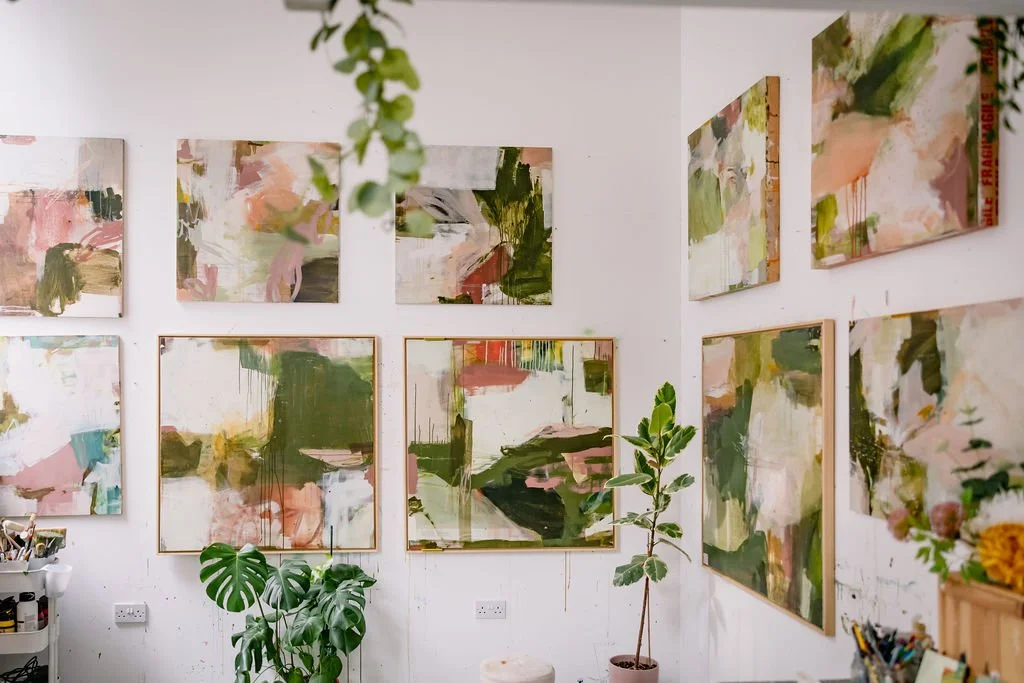Modern Abstract Art: Why You Don’t Have to “Get It” to Love It
I have been thinking lately about how art connects us—not just through what we see, but through what we feel.
Now, I know what you might be thinking. You walk into a gallery, see a huge canvas with splashes of colour, squiggly lines, or textured layers, and wonder: “Wait… what am I looking at?”
The truth is, that reaction is completely normal. Abstract art isn’t about showing you something recognisable—it’s about sparking something inside you.
So, what is modern abstract art, anyway?
Abstract art first took off more than a hundred years ago, with artists like Kandinsky and Pollock pushing boundaries and moving away from realism. But today, abstract art has evolved into something fresh and exciting.
Modern abstract artists often:
Play with unexpected materials (recycled paper, found objects, even digital tools).
Experiment with unusual techniques like pouring, layering, or collaging.
Use their art to express personal stories or social issues—so behind the colors, there’s often something deeper.
It’s not about “getting it.” It’s about feeling it.
Why does it matter?
In our world of constant scrolling and information overload, abstract art gives us a moment to breathe. Instead of telling you exactly what to see, it invites you to slow down, look closer, and decide for yourself.
That painting might remind you of a memory. Or it might just make you feel calm, energized, or curious. All of that counts as a valid response. That’s the beauty of abstraction—it meets you where you are.
How to enjoy abstract art (without stressing about it)
Here are a few tips I use when looking at abstract work:
Don’t search for a single meaning. Let the work speak to you in its own way.
Notice your reaction. Does it calm you? Excite you? Confuse you? That’s part of the art.
Try it yourself. Even if you don’t call yourself an artist, grab some paints or collage materials and play with shapes, colors, and textures. It’s freeing, I promise.
Final thoughts
Abstract art doesn’t come with instructions. And that’s exactly why it’s so powerful—it gives you room to imagine, interpret, and connect in your own way. Next time you come across an abstract piece, don’t brush it off. Sit with it. You might just find it says something you didn’t know you needed to hear.
Thanks for reading, and if this resonates with you, I’d love to hear your thoughts in the comments below. Do you love abstract art? Or do you find it tricky to connect with? Let’s chat!


